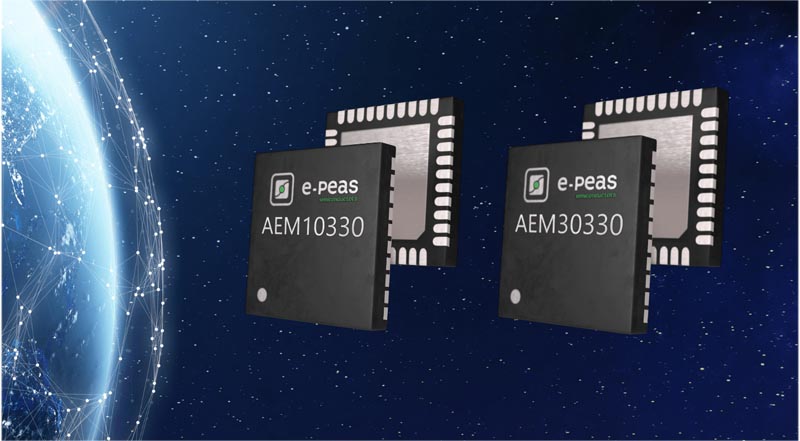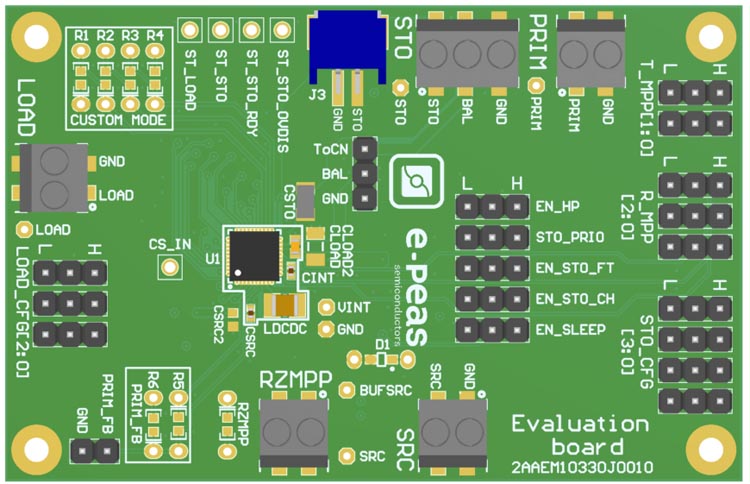Expanding its portfolio of advanced power management ICs (PMICs) for energy harvesting applications, E-peas has announced two new devices capable of further pushing the performance envelope. The RF AEM30330, Vibration AEM30330 and solar AEM10330 PMICs both utilize a buck-boost architecture. This enables them to cover a greater range of input voltage levels (from 100 mV right through to 4.5 V), meaning that low and high power sources can be addressed. The AEM30330 is targeted at RF/vibration-oriented deployments (including industrial equipment, home automation systems, healthcare monitoring and household appliances), while the AEM10330 is specifically intended for solar deployments (with the scope to manage up to 7 connected photovoltaic cells).

The new e-peas PMICs deliver a maximum current of 60 mA, so storage elements (such as supercapacitors) can be charged rapidly. Their adaptive energy management capabilities permit them to automatically switch between boost, buck-boost and buck operational configurations as deemed appropriate. This ensures that optimal energy transfer is always maintained between the respective inputs and outputs of these devices.
Another key aspect is the cold-start threshold at which an AEM30330/AEM10330-based system can begin to draw energy from the surrounding environment. This has been lowered to just 275 mV/3 µW, which is a substantial improvement on the previous generation of e-peas PMICs – and is unmatched by any other solution currently on the market.
By leveraging the fully configurable maximum power point tracking (MPPT) function, the AEM30330 and AEM10330 is able to constantly monitor and regulate the input (with a 20 ms refresh rate supported) – so the extraction efficiency of the system is kept as high as possible, regardless of variations in the input from the source. These PMICs have a working temperature range that spans from –40 °C to 125 °C. They are supplied in compact 40-pin QFN packages and require only minimal passive components to accompany them. This translates into a solution with an ultra-low bill-of-materials which takes up very little board space. Over-charge and over-discharge protection mechanisms are incorporated.
 |
| Evaluation Board for the AEM30330 PMIC. |
